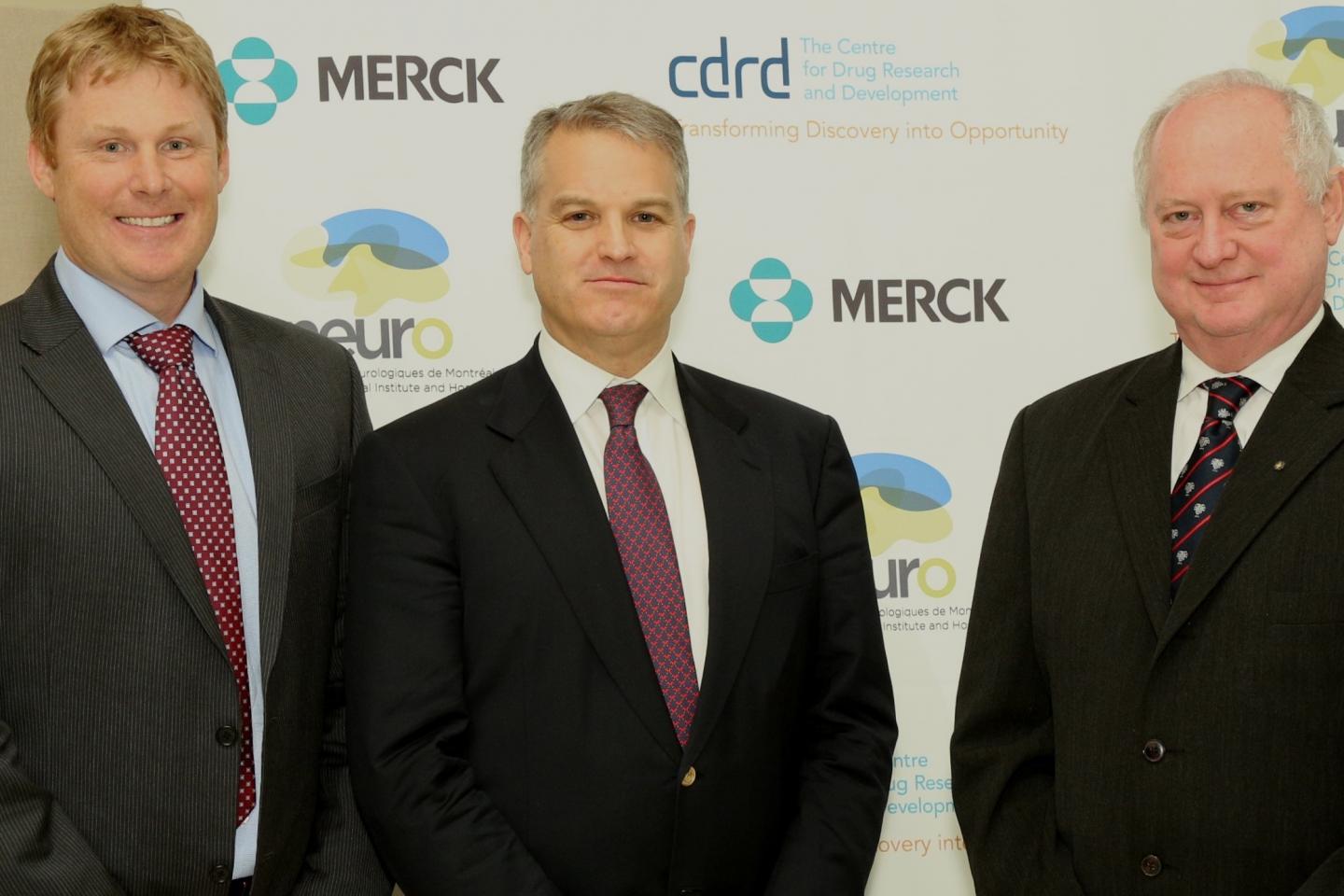3 Canadian Health Entities to Jointly Develop Therapies for Parkinson’s, Other Neurological Diseases

From left: Sean Smith, MD, executive director of Neuroscience Discovery, Merck; Gordon McCauley, president and CEO of CDRD, and Guy Rouleau, MD, Director of the Montreal Neurological Institute and Hospital.
The Vancouver-based Centre for Drug Research and Development (CDRD), the Montreal Neurological Institute and Hospital at McGill University (MNI) and Merck Canada have jointly established an innovative platform to develop and advance new drugs for Parkinson’s disease, amyotrophic lateral sclerosis (ALS) and other neurological illnesses.
The initiative, dubbed NeuroCDRD, initially aims to create a high-content, human-induced pluripotent stem cell (hiPSC) screening platform that can assist researchers when modeling neurological disease, overcoming current research challenges.
The lack of predictive humanized models has long slowed the development of novel therapeutics for neurological diseases. This new collaboration aspires to break down this barrier by having experts use MNI’s hiPSC platform to develop next-generation, disease-specific models. Research timelines and costs are expected to drop sharply after this collaboration, allowing researchers to develop hiPSC models for less common neurological diseases in the future.
“This partnership is a perfect example of how we can combine the cutting-edge science of our academic partners, such as McGill, with CDRD’s translational abilities and the commercial resources of a top industry partner like Merck,” Gordon McCauley, CRDR’s president and CEO, said in a press release. “It also speaks to the spirit of collaboration that exists in Canada. By working together, we are a catalyst for Canadian life sciences leading the world.”
Chirfi Guindo, Merck Canada’s president and managing director, said the initiative “exemplifies our ongoing approach to R&D, building collaborative relationships among talented researchers across the country. We are confident that this partnership with CDRD and MNI has the potential to accelerate development of new treatments for neurological diseases.”
In 2016, MNI became the world’s first institute to embrace the Open Science philosophy by creating the Tanenbaum Open Science Institute. The Open Science movement aims to make scientific research, data and dissemination accessible to all, meaning their researchers publish in Open Access journals, which can be read by anyone for free.
“The burden of neurological diseases and injuries on society is growing each year, and as a physician I see the impact on patients and families every day,” said Guy Rouleau, MNI’s director. “At the Montreal Neurological Institute and Hospital, our mission is to drive forward innovation, discovery and advance patient care.”






